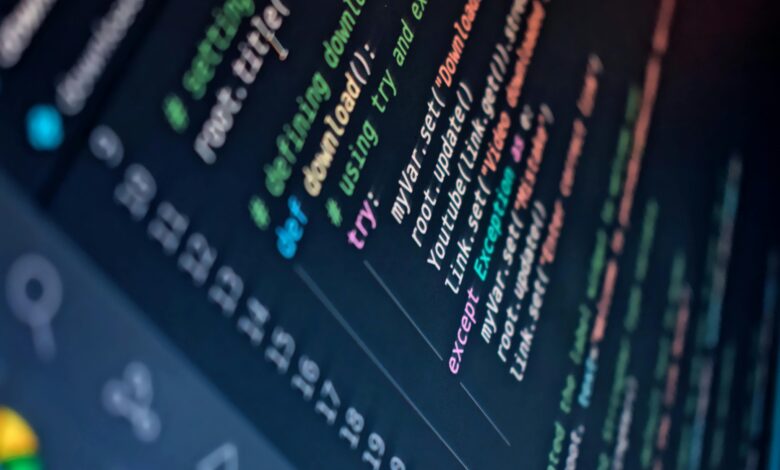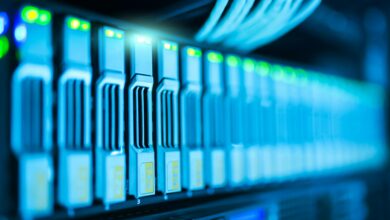The Latest Trends in Software Development

The software development landscape is constantly evolving, driven by technological advancements, changing user expectations, and the need for businesses to stay competitive. In 2023 and beyond, several key trends are shaping the way software is designed, developed, and deployed. From artificial intelligence (AI) to low-code platforms, these trends are transforming the industry and opening new possibilities for developers and organizations alike. In this article, we explore the latest trends in software development and their implications.
1. Artificial Intelligence (AI) and Machine Learning (ML)
AI and ML continue to dominate the software development space, enabling smarter applications and automating complex tasks.
Key Applications
- Predictive Analytics : AI-powered tools analyze historical data to forecast trends, helping businesses make informed decisions.
- Natural Language Processing (NLP) : NLP enables chatbots, virtual assistants, and voice recognition systems to understand and respond to human language.
- Automated Testing : AI-driven testing frameworks identify bugs faster and improve code quality by simulating real-world scenarios.
- Personalization : AI algorithms tailor user experiences by analyzing behavior and preferences.
Impact on Development
AI and ML are not only enhancing end-user applications but also streamlining the development process itself. For example, AI can assist with code generation, debugging, and performance optimization.
2. Low-Code and No-Code Platforms
Low-code and no-code platforms are democratizing software development, allowing non-technical users to build applications without extensive coding knowledge.
Why They’re Popular
- Faster Development : Drag-and-drop interfaces and pre-built templates accelerate the creation of prototypes and full-scale applications.
- Cost Efficiency : Reduces reliance on large development teams, lowering costs.
- Empowering Citizen Developers : Business analysts and other non-developers can contribute to software projects.
Examples
- Microsoft Power Apps : Enables users to create custom business apps.
- OutSystems : A robust low-code platform for enterprise-grade applications.
- Bubble : A no-code tool for building web applications.
Challenges
While these platforms simplify development, they may lack the flexibility and scalability required for highly complex systems.
3. DevSecOps: Integrating Security into DevOps
DevSecOps is an evolution of the DevOps methodology, emphasizing security as a core component of the software development lifecycle (SDLC).
Core Principles
- Shift Left on Security : Address vulnerabilities early in the development process rather than waiting until deployment.
- Automated Security Testing : Tools like static application security testing (SAST) and dynamic application security testing (DAST) integrate seamlessly into CI/CD pipelines.
- Collaboration Across Teams : Developers, operations, and security teams work together to ensure secure and efficient workflows.
Benefits
- Reduces the risk of breaches and compliance violations.
- Enhances trust among customers and stakeholders.
4. Cloud-Native Development
Cloud-native development focuses on building applications specifically for cloud environments, leveraging microservices, containers, and serverless architectures.
Key Technologies
- Containers : Tools like Docker package applications and their dependencies into portable units.
- Kubernetes : Automates the deployment, scaling, and management of containerized applications.
- Serverless Computing : Platforms like AWS Lambda and Azure Functions allow developers to run code without managing servers.
Advantages
- Scalability: Applications can dynamically adjust resources based on demand.
- Cost Savings: Pay only for what you use, reducing infrastructure expenses.
- Resilience: Distributed architectures minimize downtime and improve fault tolerance.
5. Progressive Web Apps (PWAs)
Progressive Web Apps combine the best features of websites and mobile apps, offering fast, reliable, and engaging user experiences.
Characteristics of PWAs
- Offline Functionality : Service workers enable PWAs to work even without an internet connection.
- Responsive Design : PWAs adapt to any screen size, from smartphones to desktops.
- App-Like Experience : Features like push notifications and home screen installation mimic native apps.
Business Benefits
- Lower development and maintenance costs compared to building separate web and mobile apps.
- Improved SEO and discoverability through search engines.
6. Blockchain Technology
Blockchain is expanding beyond cryptocurrencies, finding applications in industries like finance, healthcare, supply chain, and more.
Use Cases in Software Development
- Smart Contracts : Self-executing contracts coded on blockchain platforms automate processes such as payments and legal agreements.
- Decentralized Applications (dApps) : Built on blockchain networks, dApps offer transparency, security, and censorship resistance.
- Data Integrity : Blockchain ensures tamper-proof records, making it ideal for auditing and compliance.
Challenges
- High energy consumption and scalability limitations remain concerns.
- Regulatory uncertainty poses risks for widespread adoption.
7. Quantum Computing
Although still in its infancy, quantum computing holds immense potential for solving problems that are currently unsolvable by classical computers.
Potential Applications
- Optimization Problems : Solving complex logistical challenges in industries like transportation and logistics.
- Cryptography : Breaking traditional encryption methods while paving the way for quantum-resistant algorithms.
- Drug Discovery : Simulating molecular interactions to accelerate pharmaceutical research.
Current State
Quantum computing is primarily experimental, with companies like IBM, Google, and Microsoft leading the charge. However, practical applications are expected to emerge in the next decade.
8. Edge Computing
Edge computing brings computation closer to the source of data, reducing latency and bandwidth usage.
Why It’s Gaining Traction
- IoT Devices : Smart devices generate massive amounts of data that require real-time processing.
- Improved Performance : By processing data locally, edge computing minimizes delays caused by sending information to centralized servers.
- Enhanced Privacy : Sensitive data stays on-premises, reducing exposure to breaches.
Real-World Examples
- Autonomous vehicles rely on edge computing for split-second decision-making.
- Retail stores use edge devices for inventory management and personalized marketing.
9. Cross-Platform Development
Cross-platform development allows developers to write code once and deploy it across multiple operating systems, saving time and resources.
Popular Frameworks
- Flutter : Developed by Google, Flutter uses Dart to create visually appealing apps for iOS, Android, and the web.
- React Native : Facebook’s framework builds native-like apps using JavaScript.
- Xamarin : A Microsoft-owned tool for creating cross-platform apps in C#.
Advantages
- Consistent user experience across devices.
- Faster time-to-market compared to developing separate native apps.
10. Cybersecurity and Ethical Hacking
As cyber threats grow more sophisticated, cybersecurity has become a top priority in software development.
Emerging Practices
- Zero Trust Architecture : Assumes no user or device is inherently trustworthy, requiring continuous verification.
- Ethical Hacking : Developers simulate attacks to identify vulnerabilities before malicious actors exploit them.
- Encryption Everywhere : End-to-end encryption protects data at rest and in transit.
Regulatory Pressure
Laws like GDPR and CCPA mandate stricter data protection measures, pushing developers to prioritize security.




